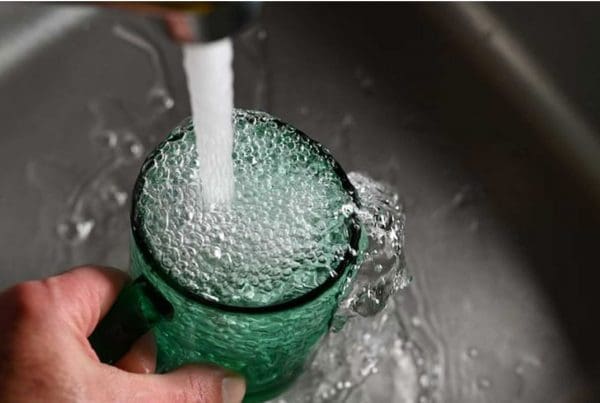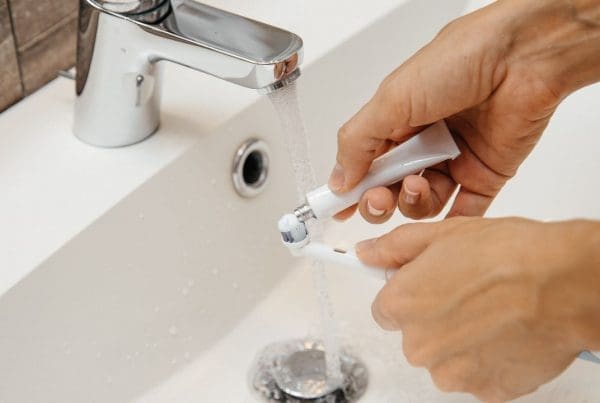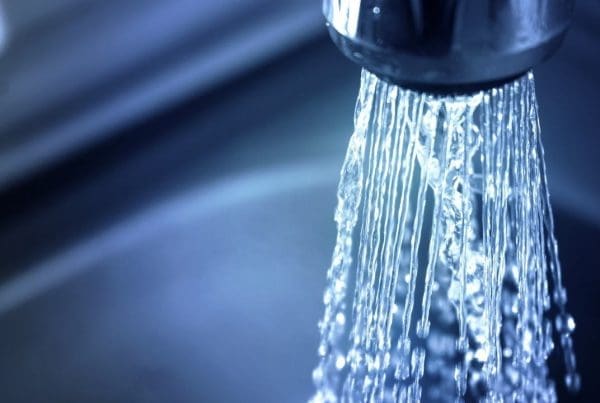Mitigate Bacteria from Your Water Supply with Ultraviolet Light
Here at C and J Water, our team of water treatment specialists uses the latest technology to provide UV disinfection solutions to homeowners. But where did it all begin for ultraviolet light as a disinfection tool and do you need one?
History of UV Light Disinfection
UV light has long been an accepted method of water treatment and sterilization. Discovered in 1801, though it wasn’t until nearly a century later when Ultraviolet Germicidal Irradiation (UVGI) was being used as a disinfection solution. Physician and scientist, Niels Ryberg Finsen, can be thanked for a pivotal time for use of light for disinfection. Famous for his invention of modern phototherapy, Finsen was the first to use UV rays to treat bacterial infections and diseases. Finsen knew that sunlight could destroy bacteria and developed a successful UV treatment for skin tuberculosis, which won him the Nobel Prize for Medicine a year before his death in 1904.
The first, full-scale, UV disinfection system for water treatment was used in Marseille, France in 1910. Six years later, the first US application of UV water disinfection was used in Kentucky. UV lamps first became commercially available in 1930 and following the end of the Second World War in 1945, germicidal UV lamps became more and more commonly used to disinfect the air. Today, UV air disinfection units are often employed in busy factories, hospitals, and other enclosed venues.
By 1985, there were approximately 1,500 UV treatment plants in Europe. Having continued to grow and grow in popularity, 15 years later, over 6,000 plants were operating in Europe.
Over the years, UV disinfection specialists have continued to advance UV technology’s applications and opportunities, including process water treatment, effluent water treatment, Legionella prevention, and more.
How Disinfection Works With an Ultraviolet Light
Today, ultraviolet disinfection is widely accepted as an effective treatment for the removal of microbiological contaminants from water. Although it was initially viewed as a treatment for un-chlorinated well water, the use of UV for city water residential applications is increasing rapidly. As the infrastructure that cities use to deliver water to customers deteriorates, point-of-entry UV is expected to become a standard feature in homes.
 Even highly chlorine-resistant microbes such as Giardia and Cryptosporidium can be effectively eliminated from water with UV. UV systems are becoming an increasingly popular alternative to chemical treatment for many applications—but how do they work?
Even highly chlorine-resistant microbes such as Giardia and Cryptosporidium can be effectively eliminated from water with UV. UV systems are becoming an increasingly popular alternative to chemical treatment for many applications—but how do they work?
Ultraviolet light is electromagnetic radiation with a wavelength that is shorter than visible light and longer than x-rays, emitted at 100 to 400 nanometers. The UV spectrum is divided into:
UVA — 315 to 400 nm
UVB — 280 to 315 nm
UVC — 200 to 280 nm
Vacuum UV — 100 to 200 nm
As bacteria in the water passes through the UV treatment system, the ultraviolet light disrupts its DNA, eliminating the ability to reproduce. If it can’t reproduce, it can’t replicate, ensuring it can’t infect what it comes into contact with. UV light water purification systems are simple but very effective. Ultraviolet light systems also have many benefits that other purification applications don’t. They are reliable, do not waste any water, and have relatively low maintenance. Also, UV light disinfection is approved by the EPA because it is chemical-free and doesn’t create any harmful byproducts.
How Do I Know if I Need a UV Light?
As with all water purification devices, the decision to buy any product should be based on how that product will impact water quality. That is, decide what you need to fix in your water, and then start looking for a product that will solve your problem. Not all water filtration or purification devices are created equal. Some products are designed to remove sediment, while some products will remove chemicals from the water. Other devices are designed to remove biological contamination. In the case of a UV light, it is the latter. Anybody who is concerned about possible or proven microbiological contamination in their drinking water should consider a UV light. Do not look to UV to remove any chemicals from water nor to improve the taste and odor of the water. It simply isn’t designed for either. Regular testing, proper maintenance, and appropriate filtration and disinfection are necessary. Adding ultraviolet technology for disinfection can reduce health risks associated with well water contamination and improve the quality of your water.
It is typically rural-living individuals who are interested in an ultraviolet light water filter and it is usually a bad water test that begins their journey through the sometimes confusing world of water purification. A bad water test is a test that shows the presence of e.coli or coliform bacteria. Both e.coli and coliform bacteria should not be present in a drinking water supply. Any laboratory that tests water will be able to test for the presence of these two bacteria. Once it’s been established that either of these two bacteria are present in a water supply, it’s left to the property owner to decide how to proceed. There are steps you can take that will mitigate the bacteria, but a UV light is a more permanent solution. Whatever water treatment equipment you choose, be sure to take control of your family’s water quality.
If you are interested in bacteria testing, disinfection, or a UV light, give the professionals at C and J Water a call!




